|
Roll-Over Protection Systems
This page includes:
- Roll-over protection airbags
- Flip-up type full roll-bars
- Pop-up type roll-bars
- EMS concerns
Like all safety restraint systems; The rollover
protection system must have a sensor to determine that there is a crash.
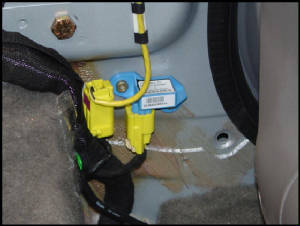
|
| Click picture to enlarge |
The rollover sensor is a little more complex than
the normal crash sensor. The Electronic Rollover Sensor provides additional protection by measuring whether the vehicle is
tilting, how fast the lean angle is changing and whether the combination means the vehicle might be headed for a rollover.
The sensor ( inclinometer) is designed
to measure the lateral and vertical acceleration, vehicle speed and roll rate to predict an impending rollover. When the sensors
detect a potential rollover, the control module triggers the curtain airbags and seat belt pre-tensioners.
An onboard computer protects against accidental deployment
by comparing the tilt angle and rate-of-roll, determining whether the vehicle is going to recover, or whether a
roll is inevitable. If the vehicle is going to roll, the system not only deploys, but also matches deployment speed to the
event. A high-speed curb launch will trigger a faster deployment than a corkscrew roll on an embankment.
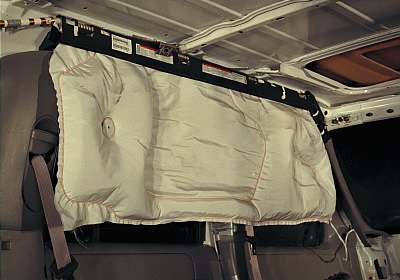
|
| Click picture to enlarge |
These sensors work in conjunction with a new style
curtain airbag.
Like all curtain airbags, the new "Safety
Canopy" airbags are hidden behind the headliner. These were first introduced in the 2002 Explorer and extended from
the A-pillar to the C-pillar. Today another section has been added to protect the third row seat area and these are now found
in most all Ford SUVs, Vans and some
cars, such as the 2008 Taurus and Sable.
Once these bags deploy, tethers located on
the bottom corners of the bag, lock them in place to prevent occupants from being ejected.
Caution! During cutting
operations, rescuers should be aware that with the addition of the third row section, they may find two compressed gas inflaters
on both sides of the roof rail instead of one. These must be visually exposed before cutting operations begin.
Warning! These airbags
have a controlled deployment speed and may deploy much faster than other airbags. The deployment zone is from the roof rail
to the bottom of the window, the full length of the vehicle and the bag is about 5 inches thick.
Like other curtain airbags, if the bag is deployed
the rescuer can simply cut the tethers and bag, to remove them out of their way. These are all single stage and can not
deploy a second time like frontal airbags.
The bag itself is also quit different than
most airbags. Most airbags depend on thermal expansion for volume. In simple terms, the nitrogen in a normal deployment
is heated, causing it to expand and fill the bag. But when the gas within the bag cools and begins to escape through
the porous material of the bag, the bag loses volume rapidly, causing it to deflate.
These airbags use a cool-gas inflator
and low-porous bag materials. The gas is cooler; so there is less shrinkage as there would be with the heat loss
and the airbags are much less porous, so they retain their volume longer. They are designed to remain inflated for up to 6
seconds, or approximately the time it takes an average vehicle to roll over a few times.
Another difference between these and other airbags,
is that the bag is folded inside the module much different. These use what is called "Roll Fold Technology". These bags
actually roll down between the window glass and the occupant, rather than expanding like an accordion, the way other
airbags do. This rolling affect allows these curtains to deploy even if the occupant is out of position. The bag will actually
roll between their head and the glass and set them upright in the seat.
The "Safety Canopy" also serves a twofold purpose.
In the event of a side impact collision, the control module will override the rollover sensor and allow the side impact
sensor to deploy these, the same as a normal side curtain airbag.
Warning! Like the curtain airbags, never
lean through the window when approaching the vehicle. These deploy straight down about 18 inches, or to the bottom of the
window and are capable of snapping a person's neck.
Video --- Watch the 180 lb dummie's feet

Rollover Protection System (ROPS)
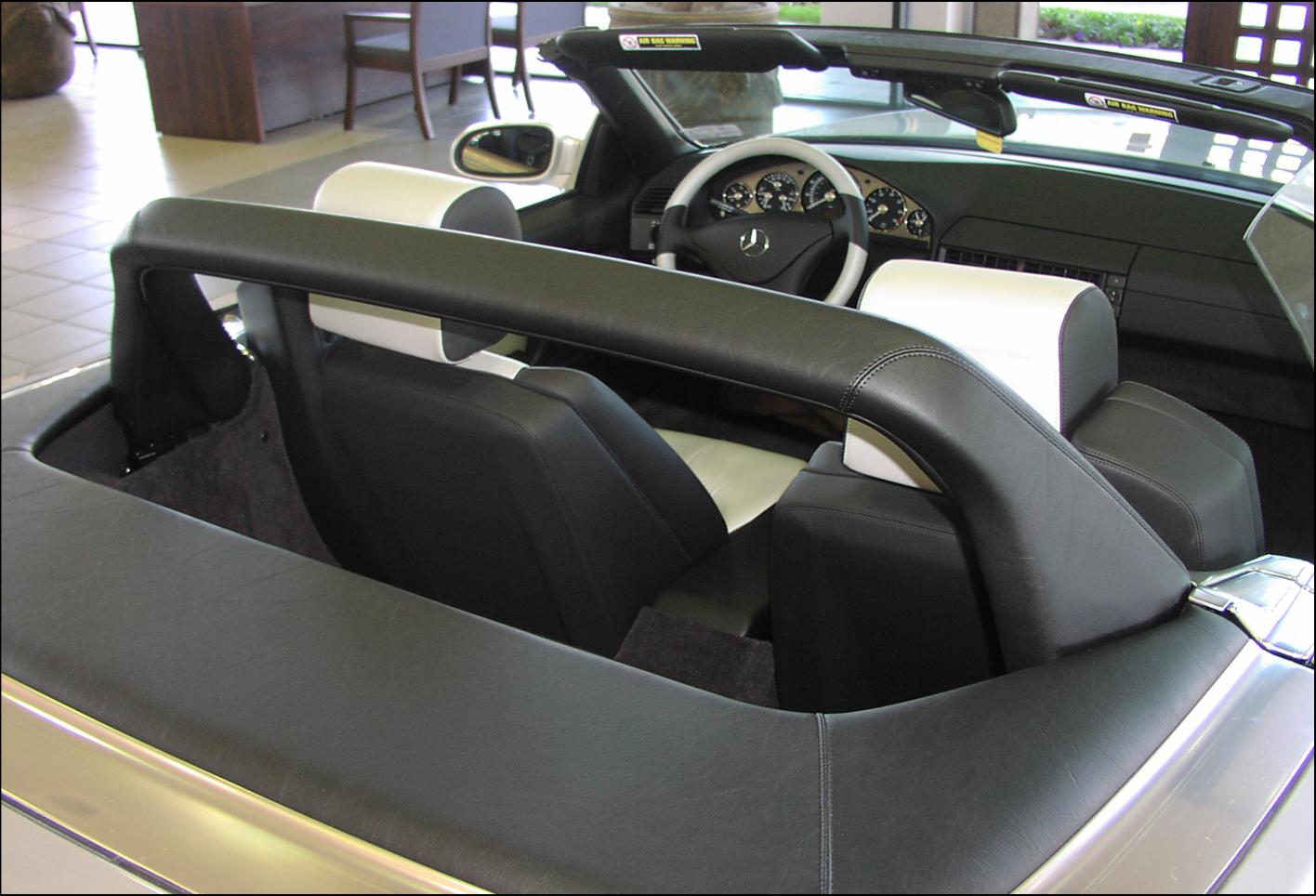
One of the earliest ROPS systems was introduced
by Mercedes in 1986. There are two types of deployable roll bars, for lack of a better name, the flip-up type and
the pop-up type. These are considered to be the flip-up type.
The flip-up type look much like a conventional
flat fixed rollbar, but unlike the fixed rollbar, deployable rollbars are concealed until activated. Then they will flip
up in less than three tenths of a second, much the same as a deploying airbag. These systems are hydraulically deployed. Once
deployed they are locked into place.
The flip-up type is used on the Mercedes two
seat roadster.
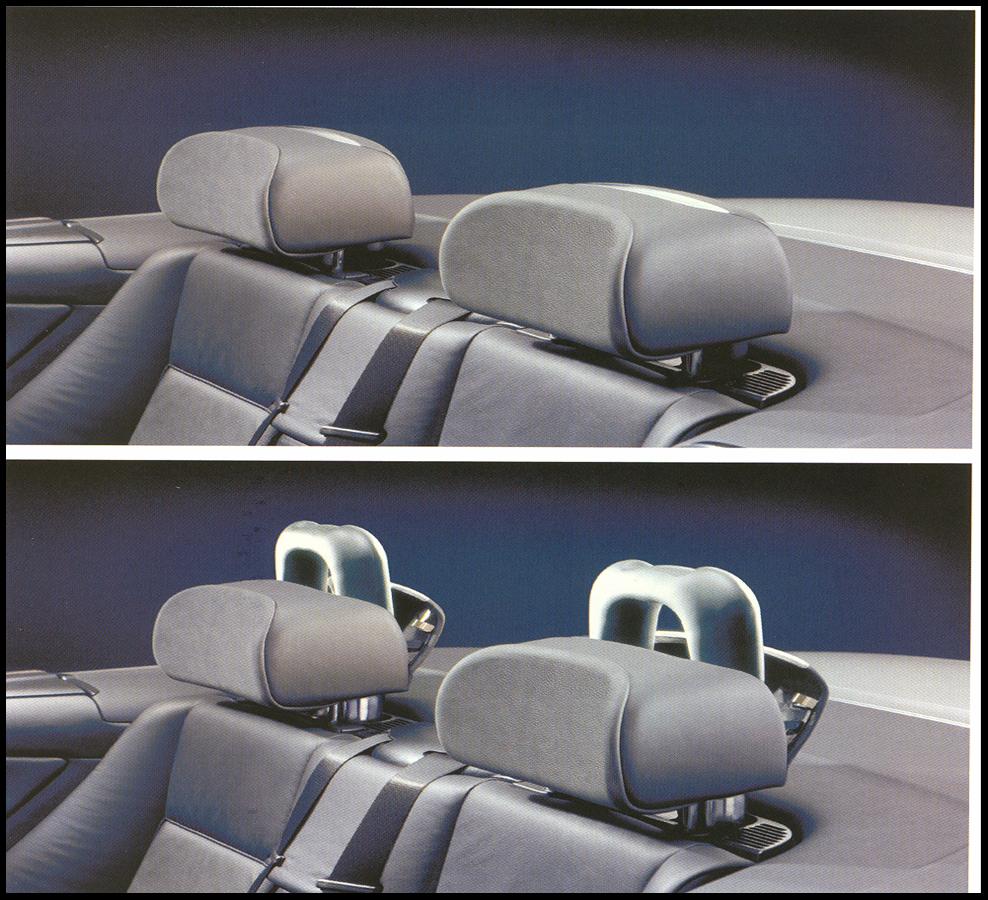
click here to play video
 . .
Today there are many types of pop-up rollover
protection systems.
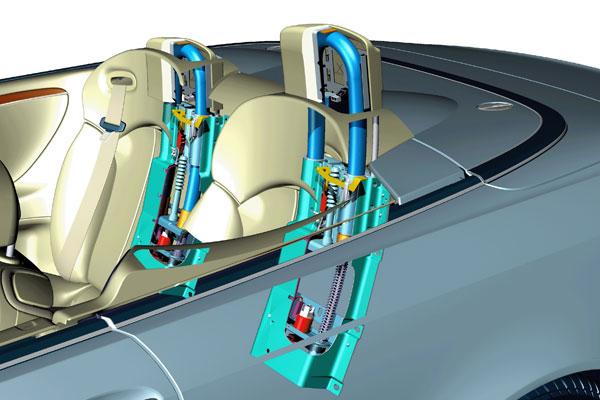
Some of the Mercedes pop-up systems are also hydraulically
deployed. While many other systems are spring
loaded and operated by an actuator latch devise.
Actuator---See animation of latch devise.
These systems are activated by an inclinometer used to
sense vehicle inclination and lateral acceleration. There is also a G-sensor that detects vehicle weightlessness if the vehicle
becomes airborne. These sensors send information to a control module the same as SRS senors do. The control module then determines
when to deploy the roll-bars. Certain limitation must be met before the control module will actuate the deployment. It
will only deploy the roll-bars in the following scenarios:
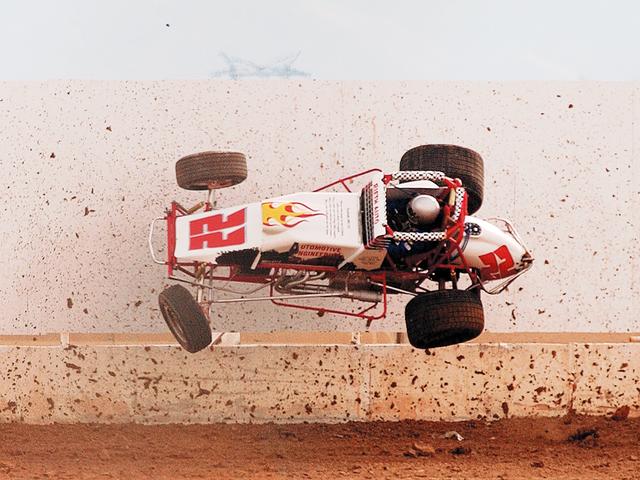
- When the vehicle approaches a lateral angle limit
of 62 degrees.
When the vehicle experiences a lateral acceleration
of approximately 3 Gs.
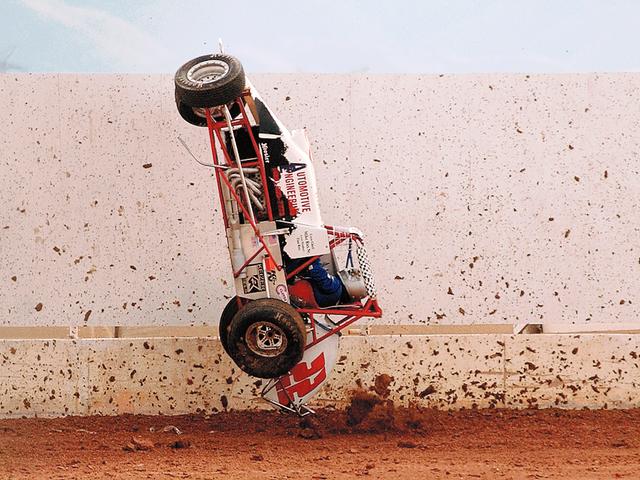
- When the vehicle approaches it's longitudinal angle
limit at approximately 72 degrees.
- When a combination of longitudinal acceleration
and longitudinal angle would cause the vehicle to roll over in the forward direction.
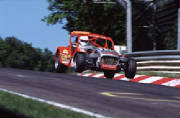
When the vehicle becomes airborne
and achieves weightlessness for at least 80ms.
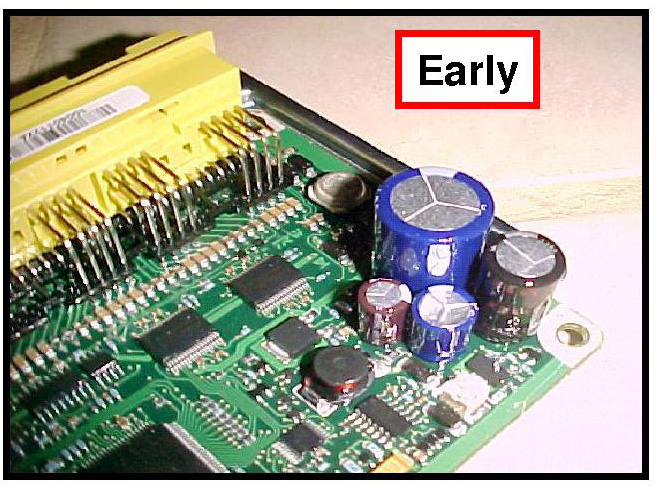
Warning! The control
module is just like the ones used with SRS systems. They contain capacitors that supply power to the system in case the battery
is destroyed in the crash.
The average capacitor drain time is 10 seconds.
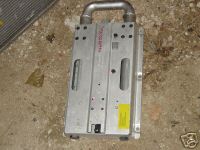
The pop-up bars are individual units mounted behind
the rear seats.
See --- Watch as Jaguar's bars pop-up.

Some are visually obvious

Others pop-up through holes behind the rear head rest.

Rescuer and EMS Concerns
Warning! EMS personnel should never lean
over the back of a convertible as in holding C-Spine on an occupant. This would put the rescuer's head right over the undeployed
roll-bar.
Many of the vehicles that are equipped with
these systems also have their batteries mount in hidden areas, such as the trunk or under the seats. Other times being roof
resting the batteries are not immediately accessible.
Rescuers must stay out of the deployment zone in
these cases. The deployment zone is 20 inches straight up from the bars.
Special considerations for the Mercedes hydraulic
types:
These systems have a manual deployment switch mounted
on the dash. If the roll-bar is not deployed, rescuers must get the power shut down immediately. If the battery is not accessible,
rescuers can manually deploy the bar by using the switch. The manual deployment is much slower than a normal deployment and
will make the bar safe to work around.

|

